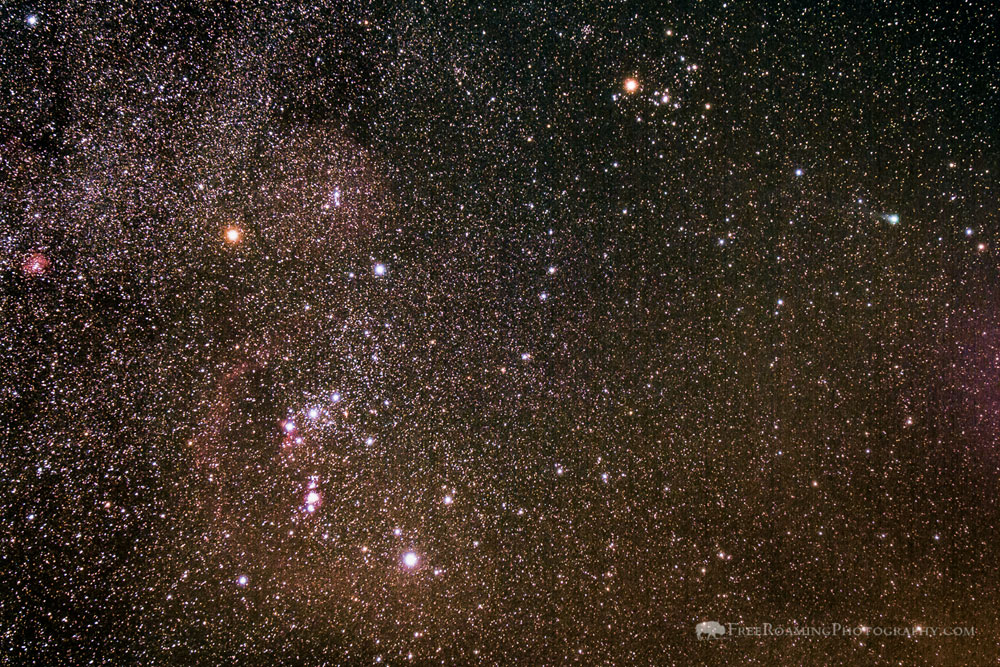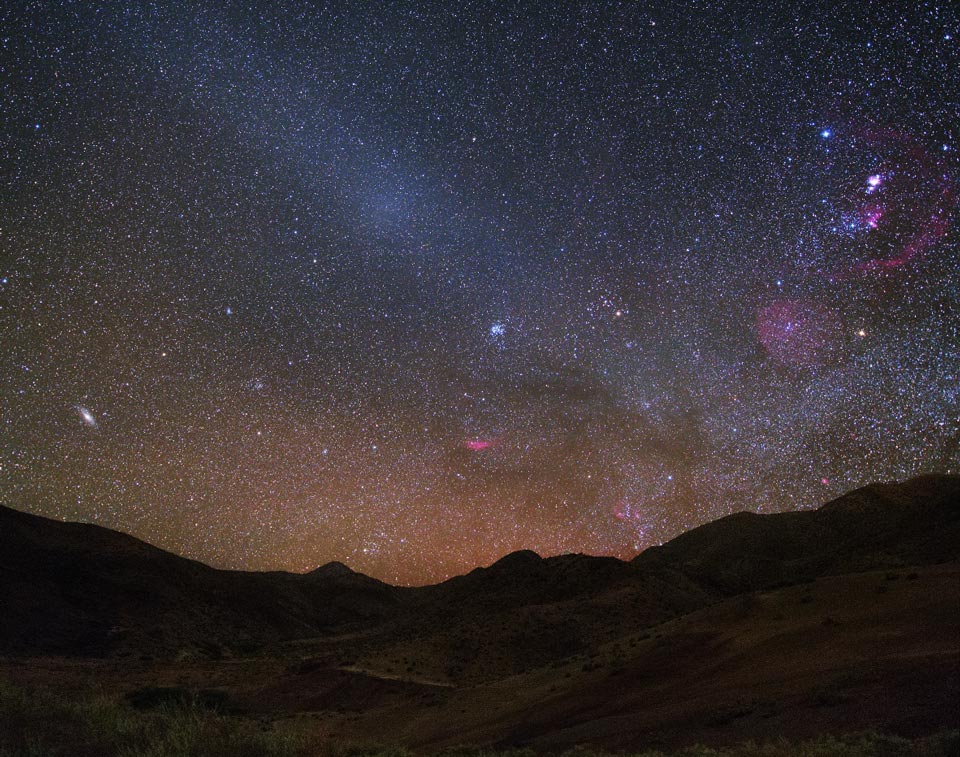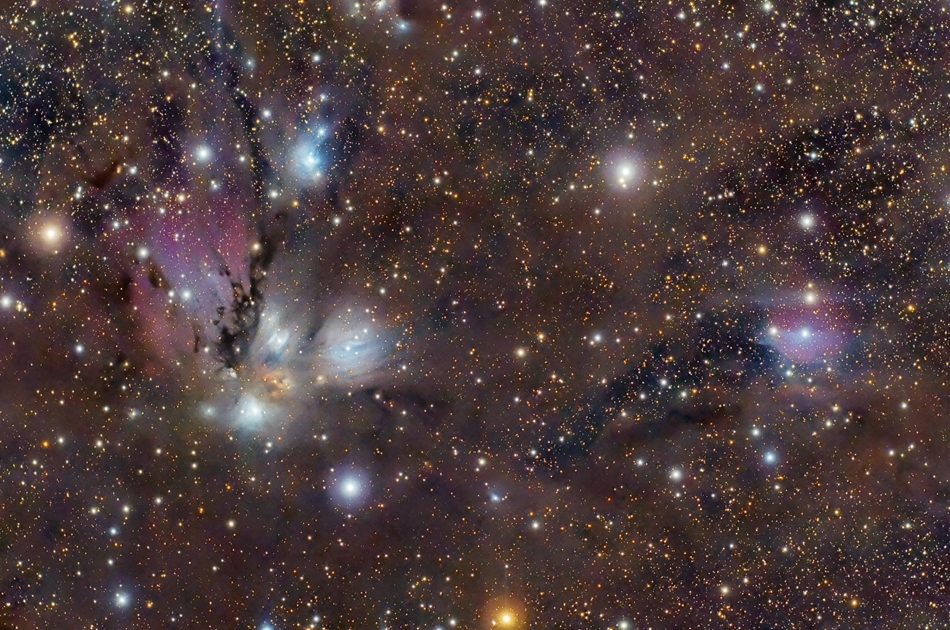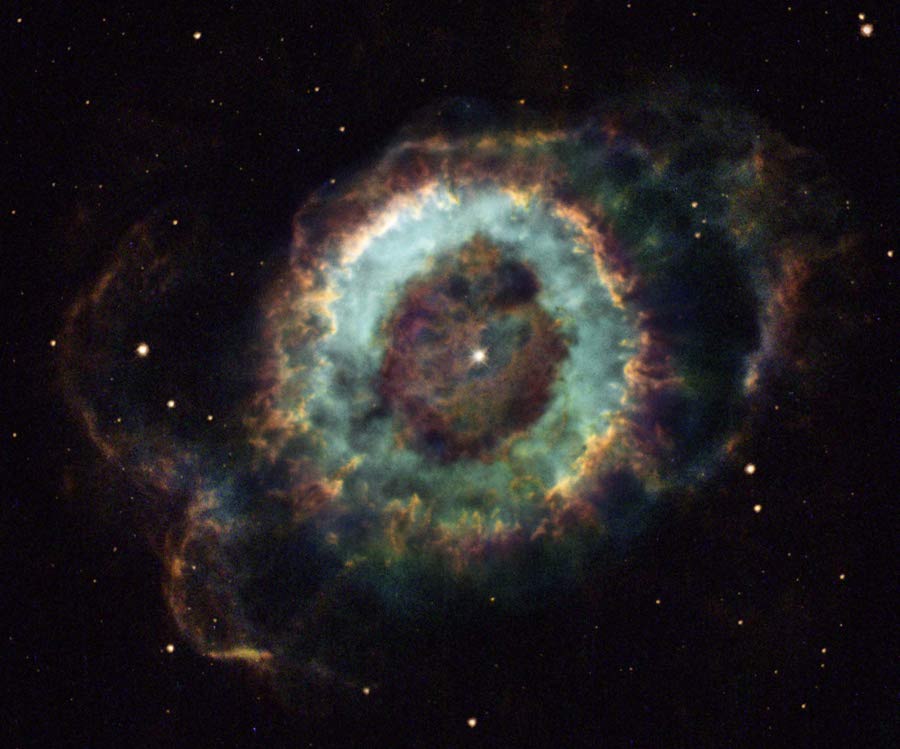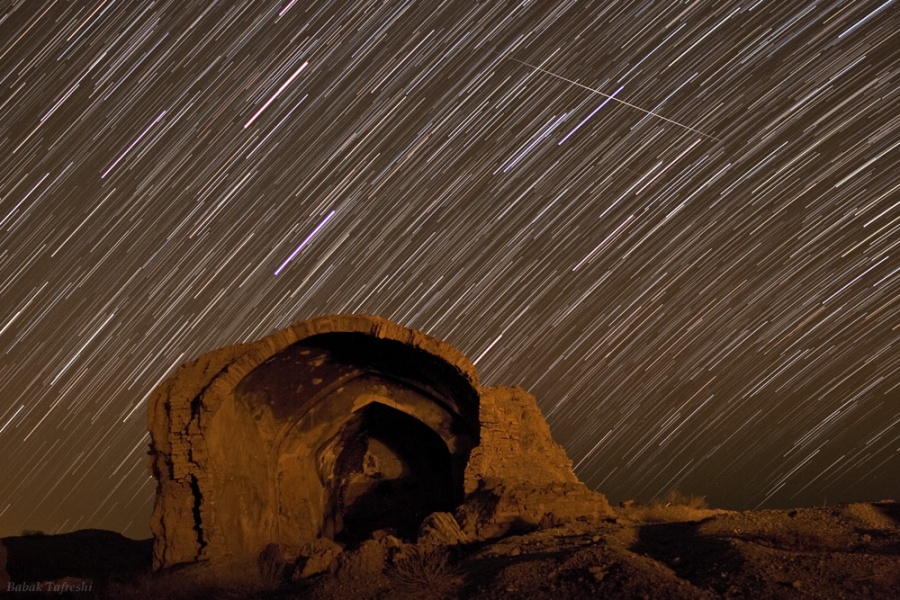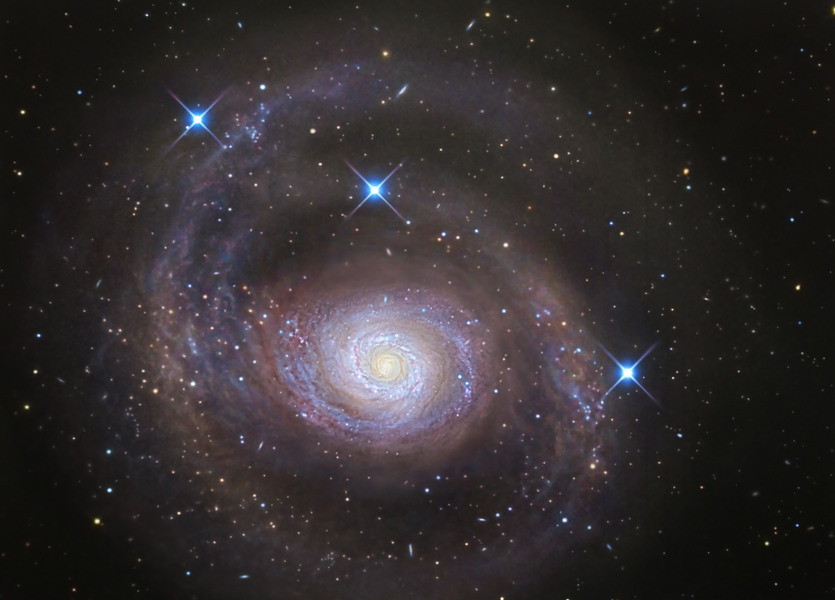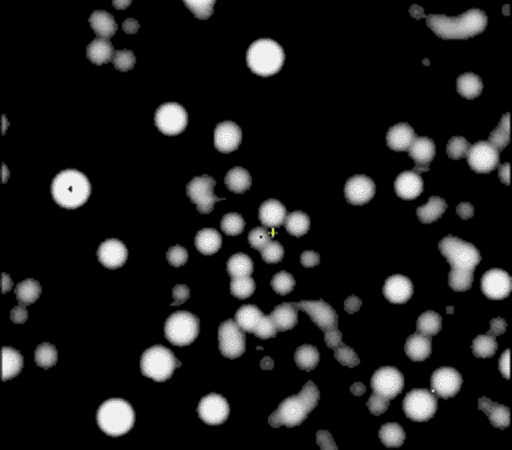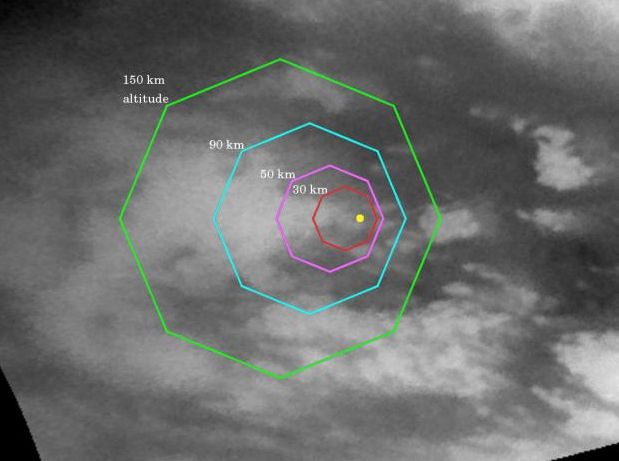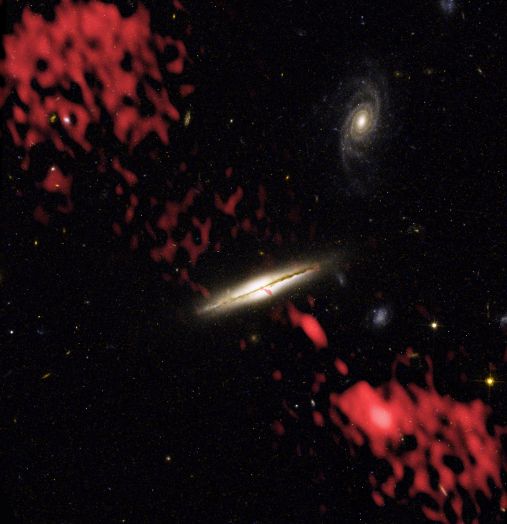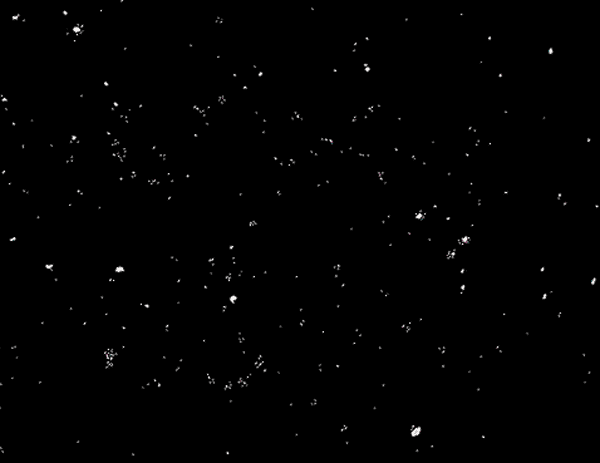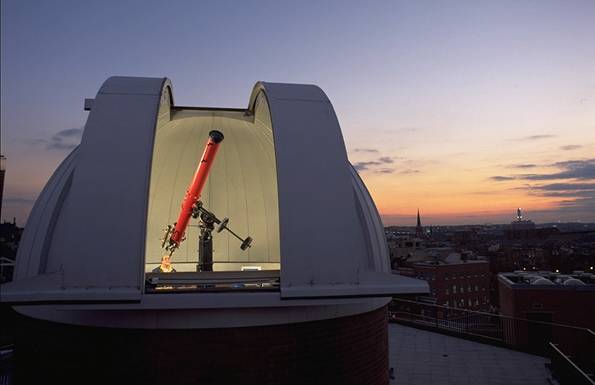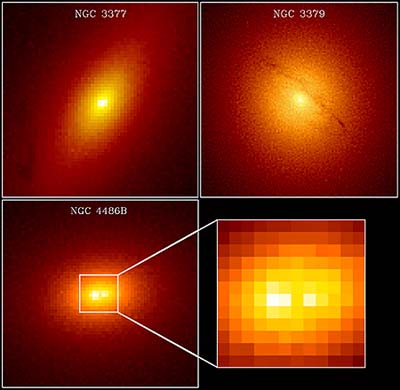| << Previous | Index | Next >> |
2015 Heading north, Comet Lovejoy (C/2014 Q2) is putting on its best show for comet watchers now, with moonlight absent from mid-January's early evening skies. An easy binocular target and just visible to the unaided eye from dark sites, the comet sweeps across the constellation Taurus the Bull in this deep night skyscape. The starry scene was captured just two days ago on January 12, from Jackson Hole, Wyoming, planet Earth. In fact, the head of Taurus formed by the V-shaped Hyades star cluster points toward Lovejoy at the right. The comet's greenish coma and tail streaming in the anti-sunward direction also seem to have been shot from Orion's bow. You can spot the familiar stars of the nebula rich constellation of the Hunter on the left, and follow this link to highlight Comet Lovejoy in the wide field of view.
2014 Is the night sky darkest in the direction opposite the Sun? No. In fact, a rarely discernable faint glow known as the gegenschein (German for "counter glow") can be seen 180 degrees around from the Sun in an extremely dark sky. The gegenschein is sunlight back-scattered off small interplanetary dust particles. These dust particles are millimeter sized splinters from asteroids and orbit in the ecliptic plane of the planets. Pictured above from last year is one of the more spectacular pictures of the gegenschein yet taken. Here a deep exposure of an extremely dark sky over Las Campanas Observatory in Chile shows the gegenschein so clearly that even a surrounding glow is visible. Notable background objects include the Andromeda galaxy, the Pleiades star cluster, the California Nebula, the belt of Orion just below the Orion Nebula and inside Barnard's Loop, and bright stars Rigel and Betelgeuse. The gegenschein is distinguished from zodiacal light near the Sun by the high angle of reflection. During the day, a phenomenon similar to the gegenschein called the glory can be seen in reflecting air or clouds opposite the Sun from an airplane.
2013 In this celestial still life composed with a cosmic brush, dusty nebula NGC 2170 shines left of image center. Reflecting the light of nearby hot stars, NGC 2170 is joined by other bluish reflection nebulae, a red emission region, many dark absorption nebulae, and a backdrop of colorful stars. Like the common household items still life painters often choose for their subjects, these clouds of gas, dust, and hot stars are also commonly found in this setting - a massive, star-forming molecular cloud in the constellation Monoceros. The giant molecular cloud, Mon R2, is impressively close, estimated to be only 2,400 light-years or so away. At that distance, this canvas would be over 40 light-years across.
2012 This pretty planetary nebula, cataloged as NGC 6369, was discovered by 18th century astronomer William Herschel as he used a telescope to explore the medicinal constellation Ophiucus. Round and planet-shaped, the nebula is also relatively faint and has acquired the popular moniker of Little Ghost Nebula. Planetary nebulae in general are not at all related to planets, but instead are created at the end of a sun-like star's life as its outer layers expand into space while the star's core shrinks to become a white dwarf. The transformed white dwarf star, seen near the center, radiates strongly at ultraviolet wavelengths and powers the expanding nebula's glow. Surprisingly complex details and structures of NGC 6369 are revealed in this tantalizing image composed from Hubble Space Telescope data. The nebula's main ring structure is about a light-year across and the glow from ionized oxygen, hydrogen, and nitrogen atoms are colored blue, green, and red respectively. Over 2,000 light-years away, the Little Ghost Nebula offers a glimpse of the fate of our Sun, which could produce its own planetary nebula only about 5 billion years from now.
2011 The Quadrantid Meteor Shower is an annual event for planet Earth's northern hemisphere skygazers. It usually peaks briefly in the cold, early morning hours of January 4. The shower is named for its radiant point on the sky within the old, astronomically obsolete constellation Quadrans Muralis. That position is situated near the boundaries of the modern constellations Hercules, Bootes, and Draco. In this haunting time exposure, two quadrantid meteor streaks are captured crossing trails left by rising stars of the constellations Virgo and Corvus, but Saturn leaves the brightest "star" trail. The meteor streaks, one bright and one faint, are nearly parallel above and right of center in the frame. Fittingly, the old cistern structure in the foreground lies above the now buried city of Qumis. Known as a city of many gates, Qumis (in Greek history Hecatompylos), was founded 2300 years ago in ancient Persia.
2010
2009 Is this a painting or a photograph? In this beautiful celestial still life composed with a cosmic brush, dusty nebula NGC 2170 shines near the image center. Reflecting the light of nearby hot stars, NGC 2170 is joined by other bluish reflection nebulae, a red emission region, many dark absorption nebulae, and a backdrop of colorful stars. Like the common household items still life painters often choose for their subjects, the clouds of gas, dust, and hot stars pictured here are also commonly found in this setting - a massive, star-forming molecular cloud in the constellation Monoceros. The giant molecular cloud, Mon R2, is impressively close, estimated to be only 2,400 light-years or so away. At that distance, this canvas would be over 40 light-years across.
2008
2007 Why are these stars moving so fast? Shown above is a time-lapse movie in infrared light detailing how stars in the central light-year of our Galaxy have moved over the past eight years. The yellow mark at the image center represents the location of a peculiar radio source named Sgr A*. If these fast stars are held to the Galactic Center by gravity, then the central object exerting this gravity must be both compact and massive. Analysis of the stellar motions indicates that over one million times the mass of our Sun is somehow confined to a region less than a fifth of a light-year across. Astronomers interpret these observations as strong evidence that the center of our Galaxy is home to a very massive black hole.
2006 On November 17, 1970 the Soviet Luna 17 spacecraft landed the first roving remote-controlled robot on the Moon. Known as Lunokhod 1, it weighed just under 2,000 pounds and was designed to operate for 90 days while guided in real-time by a five person team at the Deep Space Center near Moscow, USSR, Planet Earth. The futuristic looking eight wheeler rode on top of a descent module that extended ramps from both sides offering alternative routes to the surface in case one side was blocked by boulders. Lunokhod 1 toured the lunar Mare Imbrium (Sea of Rains) for 11 months in one of the greatest successes of the Soviet lunar exploration program. This Lunokhod's operations officially ceased on October 4, 1971, 14 years after the launch of Sputnik.
2005 Today's descent to the surface of Titan by the European Space Agency's Huygens probe was the most distant landing ever by a spacecraft from Earth. At 10:13 UT (5:13am EST, 11:13 CET), Huygens entered the atmosphere of Saturn's large mystery moon at an altitude of 180 kilometers. Radio astronomers reported detecting signals from the probe indicating that that Huygens began to deployed a series of parachutes to control its 2 hour descent through Titan's dense atmosphere. Huygens' anticipated landing point is marked by a yellow dot in this near-infrared image from the Cassini spacecraft ... but it is not known if a solid or liquid surface awaited it. The outermost of the nested octagons is about 1,120 kilometers across. The outlines are labeled by altitude and indicate areas of coverage by Huygens' imaging instruments during the descent.
2004 If you could stand on Mars -- what would you see? Scrolling right will reveal a full color 360-degree panoramic view from NASA's Spirit Rover that landed on Mars just 10 days ago. The image is a digital mosaic from the panoramic camera that shows the view in every direction. Annotated on the image are the directions and distances to various hills along the horizon. These hills are valuable for orienting Spirit since they are also visible to the Mars Global Surveyor and Mars Odyssey spacecraft orbiting high overhead. Visible in the foreground are several instruments and airbags around Columbia Memorial Station. Spirit will attempt to roll onto the red planet in the next few days and explore interesting features.
2003 Centered above is distant galaxy 0313-192, some one billion light-years away. Radio emission from the galaxy has been mapped by the National Radio Astronomy Observatory's Very Large Array and is shown in red, composited with a visible light image from the Hubble Space Telescope's new Advanced Camera for Surveys. Dust lanes and other features in the Hubble image as well as infrared Gemini telescope data demonstrate clearly that 0313-192 is a spiral galaxy seen edge-on. (Note the unrelated spiral galaxy seen face-on above and to the right.) For years, double cosmic clouds of radio emission such as those flanking this spiral galaxy's core have been studied and cataloged. But, at least until now, such radio sources were only known to arise from the cores of giant elliptical galaxies or in violent merging galaxy systems, making 0313-192 the wrong kind of galaxy to be found in this scenario. Astronomers are searching for clues to why this spiral galaxy, potentially similar to our own Milky Way, shows such powerful activity.
2002 Sometimes it looks like the Sun is being viewed through a large lens. In the above case, however, there are actually millions of lenses: ice crystals. As water freezes in the upper atmosphere, small, flat, six-sided, ice crystals might be formed. As these crystals flutter to the ground, much time is spent with their faces flat, parallel to the ground. An observer may pass through the same plane as many of the falling ice crystals near sunrise or sunset. During this alignment, each crystal can act like a miniature lens, refracting sunlight into our view and creating phenomena like parhelia, the technical term for sundogs. The above image was taken in the morning of the 2000 Winter Solstice near Ames, Iowa, USA. Visible in the image center is the Sun, while two bright sundogs glow prominently from both the left and the right. Also visible behind neighborhood houses and trees are the 22 degree halo, three sun pillars, and the upper tangent arc, all created by sunlight reflecting off of atmospheric ice crystals.
2001 Johannes Kepler used simple mathematics to describe how planets move. Kepler was an assistant to the most accurate astronomical observer of the time, Tycho Brahe. Kepler was able to use Brahe's data to show that planets move in ellipses around the Sun (Kepler's First Law), that planets move proportionally faster in their orbits when they are nearer the Sun (Kepler's Second Law), and that more distant planets take proportionally longer to orbit the Sun (Kepler's Third Law). Kepler lived from 1571 to 1630, during the time of discovery of the telescope. Kepler was one of the few vocal supporters of Galileo's discoveries and the Copernican system of planets orbiting the Sun instead of the Earth.
2000 It is everywhere but nobody knew why. In every direction at all times, the sky glows in X-rays. The X-ray background phenomenon was discovered over 35 years ago, soon after the first X-ray satellites were launched, and has since gone unexplained. Yesterday results were released using data from the recently launched Chandra X-Ray Observatory that appears to have resolved much of this mystery. The above photograph shows that about 80 percent of the apparently diffuse hard X-ray background can be resolved into very many very faint sources. The new question is now what are these sources? Early speculation, much of which predates these observations, holds that many of these sources are the active centers of distant galaxies, probably involving massive black holes. Still other sources may be of origins currently unknown.
1999 The Massachusetts-based firm of Alvan Clark and Sons became famous for making telescope optics near the end of the last century. Near the end of this century, major astronomical observatories still boast of telescopes with lenses and mirrors made by them including Lowell Observatory's 24 inch diameter refractor, the United States Naval Observatory's 26 inch refractor, the McCormick Observatory's 26 inch, Lick Observatory's 36 inch, and Yerkes Observatory's 40 inch refractor - the largest refracting telescope in the world. Small observatories too can claim such a link to telescopic history and many offer the general public a chance to "look through a classic". This gorgeous, completely refurbished 8 inch refractor was originally bought from Alvan Clark and Sons in 1927. On Thursdays it stargazes from the Crosby Ramsey Memorial Observatory dome atop the Maryland Science Center near Baltimore's Inner Harbor.
1998 Watching galaxies recede, observational astronomers of the 20th century discovered an astounding fact - the Universe is expanding. Will it continue to expand forever? The speed of light is finite so looking into the distant Universe is equivalent to looking at the distant past. These three Hubble Space Telescope images show some of the most distant detectable supernovae - stellar explosions, five to seven billion light-years away, which occurred before the Sun was formed. As recently reported, the apparent brightness and expansion velocities associated with these and other distant supernovae are beginning to suggest that the expansion rate of the Universe has not slowed but increased over time and that the expansion of the Universe is destined to continue.
1997 Do all galaxies have black holes at their centers? Although not even a single galaxy has yet been proven to have a central black hole, the list of candidates has increased yet again. Recent results by astronomers using the Hubble Space Telescope now indicate that most - and possibly even all - large galaxies may harbor one of these dense beasts. In all the galaxies studied, star speeds continue to increase closer the very center. This in itself indicates a center millions of times more massive than our Sun is needed to contain the stars. This mass when combined with the limiting size make the case for the central black holes. Will we ever know for sure?
1996 Every bright object in this 1994 photograph by the Hubble Space Telescope is a galaxy. Oddly - most of the objects are spiral galaxies. This rich cluster of galaxies, named CL 0939+4713, is almost half way across the visible universe. Photos like this indicate that clusters in the past contained a higher fraction of spirals than do nearby clusters, which are usually dominated by elliptical galaxies.
| << Previous | Index | Next >> |
